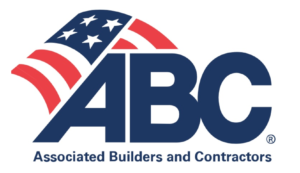Maintenance and Testing of Emergency Power Supply Systems
Properly applying NFPA 110 requirements is the best way to ensure the lights stay on when they’re needed most.
Randy Barnett | Aug 17, 2018
Over the years, the need for increased reliability of electrical systems is no secret to those in the electrical industry. Data centers, hospitals, emergency call centers, government buildings, and financial institutions are just a few of the types of facilities that demand reliable sources of backup power.
Couple an aging utility grid with a need for reliable power sources, and the standby generator immediately comes to mind. But what makes a backup power source so reliable? Just because it is a diesel or natural gas-powered power source, is it assured that — in the event of a loss of primary power — this alternate source will come online, supplying critical loads in the designated time, for the length of time needed, and at the proper quality of power? The answer is “no” — not unless there is reason to believe this emergency system has been properly maintained and put through an adequate testing program to provide reasonable confidence it will perform its needed function. Enter NFPA 110, Standard for Emergency and Standby Power Systems.
NFPA 110 is the performance standard often specified by the Authority Having Jurisdiction (AHJ) to provide facility owners a consensus-approved standard by which their backup power system is classified, maintained, and tested.
NFPA 110 was first formally published in 1985. The standard includes the requirements for all components of the emergency power supply system (EPSS), which is much more than just a backup generator. It also includes the conductors, disconnecting means, overcurrent protection, transfer switches, control and supervisory circuits — in short, any components necessary to ensure this source of electrical energy will deliver a safe and reliable source of power is encompassed by the EPSS and are included in the maintenance and testing requirements of the EPSS (see Figure on page 18). The emergency system ends at the load terminals of the transfer switch. From these load terminals, the remaining components of the distribution systems are covered by other applicable codes.
Over the years, the need for increased reliability of electrical systems is no secret to those in the electrical industry. Data centers, hospitals, emergency call centers, government buildings, and financial institutions are just a few of the types of facilities that demand reliable sources of backup power.
Couple an aging utility grid with a need for reliable power sources, and the standby generator immediately comes to mind. But what makes a backup power source so reliable? Just because it is a diesel or natural gas-powered power source, is it assured that — in the event of a loss of primary power — this alternate source will come online, supplying critical loads in the designated time, for the length of time needed, and at the proper quality of power? The answer is “no” — not unless there is reason to believe this emergency system has been properly maintained and put through an adequate testing program to provide reasonable confidence it will perform its needed function. Enter NFPA 110, Standard for Emergency and Standby Power Systems.
Emergency and standby power system
NFPA 110 is the performance standard often specified by the Authority Having Jurisdiction (AHJ) to provide facility owners a consensus-approved standard by which their backup power system is classified, maintained, and tested.
NFPA 110 was first formally published in 1985. The standard includes the requirements for all components of the emergency power supply system (EPSS), which is much more than just a backup generator. It also includes the conductors, disconnecting means, overcurrent protection, transfer switches, control and supervisory circuits — in short, any components necessary to ensure this source of electrical energy will deliver a safe and reliable source of power is encompassed by the EPSS and are included in the maintenance and testing requirements of the EPSS (see Figure on page 18). The emergency system ends at the load terminals of the transfer switch. From these load terminals, the remaining components of the distribution systems are covered by other applicable codes.
The National Electrical Code (NEC) recognizes three separate types of standby power systems under Chapter 7, Special Conditions. Article 700 addresses “Emergency Systems.” Article 701 addresses “Legally Required Standby Systems.” Article 702 covers “Optional Standby Systems.” Since optional standby systems are just what they say, “optional,” they are not covered by NFPA 110. It classifies emergency systems based on three factors. First, systems are classified by their importance to life and health: “Level 1” or “Level 2.” Then, emergency systems are specified by “Class,” which is based on the amount of time the system must be capable of operating at full load without refueling. Finally, systems are specified by “Type”: the maximum amount of time the load terminals of the transfer switch may be without power. Maintenance and operational testing are used to verify the system will meet its classification requirements and ensure a reliable source of standby power to designated loads.
NFPA 110 uses the term Emergency Power Supply (EPS) in reference to a source of electrical energy that must be of “required capacity and quality for an emergency power supply system.” The EPS must be rotating equipment and driven by one of three types of engines: Otto cycle (spark ignition), diesel cycle, or gas turbine. For reasons of reliability, a diesel engine prime mover coupled to a 3-phase generator and mounted together as one unit (generator set) is the most common type of emergency power supply in use. A large part of maintenance and operational testing revolves around the diesel-driven generator set
Modern generator set control systems provide both local and remote indication of engine and generator parameters, alarms/annunciation, and historical data. All such information is vital for a maintenance and testing program.
Required maintenance and testing
Preventive maintenance and testing, which must be performed by qualified persons, is conducted to help ensure system reliability. Manufacturer’s maintenance recommendations should always be used, yet these may differ from NFPA 110 minimum requirements. It is important to recognize and understand the differences and then blend information together (as needed) to meet the minimum specified by NFPA 110 or other AHJ requirements. NFPA 70B, Recommended Practice for Electrical Equipment Maintenance, provides information on testing and test methods. Two additional documents from the International Electrical Testing Association (NETA) provide information for maintenance tests to be conducted along with minimum test specifications: ANSI/NETA ATS, Standard for Acceptance Testing Specifications for Electrical Power Distribution Equipment and Systems, addresses initial acceptance testing, and ANSI/NETA MTS, Standard for Maintenance Testing Specifications for Electrical Power Distribution Equipment and Systems, addresses maintenance testing.
NFPA 110 requires acceptance testing of the EPSS upon completion of installation and that a maintenance program then be instituted. To develop and implement a maintenance program, consult the equipment manufacturer documentation, NFPA 70B, NFPA 110 and the above-mentioned ANSI/NETA standards. Be aware many other standards may also apply. These may include: NFPA 30, Flammable and Combustible Liquids Code and NFPA 70, National Electrical Code for installation information; NFPA 111, Standard on Stored Electrical Energy Emergency and Standby Power Systems for flywheel and battery type uninterruptible power supply (UPS) systems. The distribution systems connecting to the load terminals of the transfer switch are covered by separate documents such as NFPA 99, Health Care Facilities Code or NFPA 101, Life Safety Code.
Maintenance and operational testing
The following discussion references the highlights for maintenance and testing found in NFPA 110. Always consult the above references and others (as needed) along with working with the AHJ to establish the emergency power system maintenance and testing program.
Consideration must always be given to providing reliable power to emergency loads — especially before maintenance begins! If the generator set is out of service for maintenance, how will emergency power system requirements be met? Some maintenance items may require lockout of other components of the emergency power system, rendering that portion of the emergency system inoperable — if not the entire system. For example, maintenance on the automatic transfer switch (ATS) may require operation in a “bypass” mode. This would bypass power around the automatic components of the system, allowing them to be serviced while normal power is still supplied to emergency loads. Maintenance and operations personnel must be aware automatic operations of the transfer switch will not function in the event of a loss of normal power, thereby compromising the integrity of the emergency system.
Consideration must be given to providing other temporary sources of power during emergency system maintenance. Some emergency systems may already be designed with alternate sources of power for use when the emergency system is not available. Perhaps a system has two or more generators that can be operated in parallel to supply loads. However, one of the generators may be taken down for maintenance while the remaining generator(s) can be used to meet system needs. In some cases, a mobile generator may need to be rolled onto the site to provide temporary power for scheduled outages.
As always, for industrial equipment, manufacturer’s instructions should be relied upon for maintenance instructions and schedules. However, additional items will most likely apply for emergency systems based on NFPA 110 or other codes used by the AHJ. For emergency systems, the manufacturer is required to supply two sets of instruction manuals as a minimum. The manuals must provide the following information:
- Detailed explanations of system operation.
- Routine maintenance instructions.
- Detailed repair instructions for the generator set and other EPSS major components.
- Illustrated parts list with part numbers.
- Schematic drawings of the electrical system, including safety interlocks, control panels, annunciators and instrumentation.
(Reproduced by permission from E,C & M Magazine)

